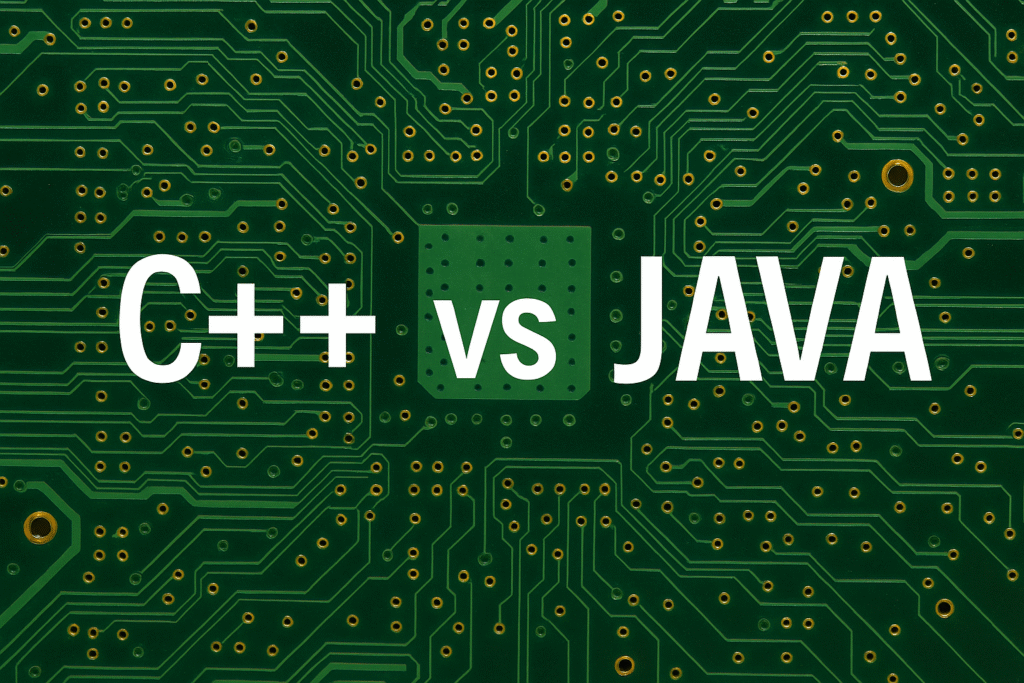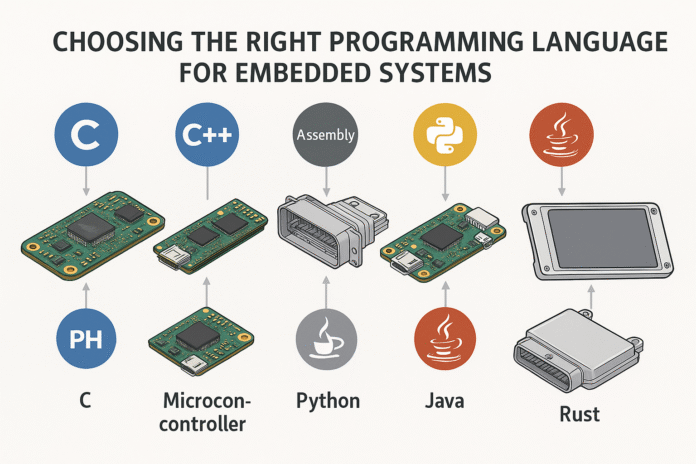Selecting the right programming language can determine the performance, reliability, and scalability of an embedded project. When developing an embedded system, software must interact directly with hardware such as microcontrollers, processors, and peripheral devices, while meeting strict requirements for speed, power efficiency, and memory usage. Equally important, successful integration requires close alignment with pcb design principles since software performance is directly tied to board layout, signal integrity, and hardware capabilities. This article explores choosing the right programming language for embedded systems, discussing factors to consider, popular language options, and real-world case examples.
Factors to Consider When Selecting a Language
Not all programming languages suit every embedded application. The right choice depends on balancing hardware, cost, and software demands.
- Hardware constraints
- Embedded systems often run on limited memory and processing power. Languages with lightweight runtimes such as C or assembly are best for microcontrollers.
- Real-time requirements
- Safety-critical systems like automotive airbag controllers demand deterministic performance. This often rules out interpreted or garbage-collected languages.
- Development speed and maintainability
- For rapid prototyping, high-level languages like Python or Java can accelerate development.
- Ecosystem and toolchain support
- Availability of compilers, IDEs, debugging tools, and libraries plays a large role in language choice.
- Scalability and portability
- Some projects grow into larger systems over time. Choosing a language with good portability ensures long-term flexibility.
- Integration with pcb design
- When selecting a language, engineers must consider board-level features such as memory architecture, peripheral layout, and power regulation.
These factors form the foundation for evaluating different programming languages in embedded applications.
Low-Level Languages (C and Assembly)
C Language
C remains the most widely used language in embedded programming. It offers:
- Direct hardware control: Easy access to memory-mapped registers and peripherals.
- Efficiency: Generates compact, optimized machine code.
- Portability: Works across most microcontrollers and processors.
- Wide ecosystem: Supported by nearly every embedded toolchain.
For example, real-time control of sensors and actuators in automotive ECUs often relies on C. Its ability to fine-tune timing and performance makes it ideal for mission-critical systems.
Assembly Language
Assembly is used for applications where every cycle counts. While not as portable as C, it allows maximum efficiency by directly controlling processor instructions.
- Advantages: Absolute control over timing, memory, and hardware.
- Drawbacks: Harder to maintain, limited portability.
Assembly is often used in device bootloaders, interrupt routines, and ultra-low-power designs. However, most modern systems combine C with small sections of assembly for optimization.

High-Level Options (C++ and Embedded Java)
C++
C++ builds on C by offering abstraction, object-oriented features, and better code organization. Benefits include:
- Encapsulation: Easier management of large codebases.
- Libraries: Support for embedded middleware, networking stacks, and RTOS integration.
- Reusability: Simplifies scaling from small devices to complex systems.
For example, robotics applications often rely on C++ for handling real-time sensor fusion, path planning, and modular software components. While slightly heavier than C, its added productivity often outweighs performance costs when hardware resources allow.
Embedded Java
Java is not commonly associated with embedded systems, but embedded-specific versions (such as Java ME or lightweight VMs) are used in select cases.
- Advantages: Portability across platforms, large developer base, strong ecosystem.
- Use cases: Smartcards, industrial HMIs, and IoT gateways.
- Limitations: Garbage collection and runtime overhead make it unsuitable for time-critical applications.
Java is more common in mid- to high-end embedded devices where performance demands are moderate but portability and maintainability are valued.
Scripting and Prototyping with Python
Python has grown in popularity within embedded development, particularly with platforms like MicroPython and CircuitPython.
- Advantages:
- Rapid prototyping.
- Ease of learning for beginners.
- Extensive libraries for IoT and machine learning.
- Use cases:
- IoT devices with Wi-Fi modules.
- Educational boards such as the BBC micro:bit.
- Sensor data collection and quick testing environments.
Python is not ideal for final production firmware in low-resource devices. However, it excels in prototyping, education, and higher-level IoT nodes where hardware can support its runtime.
Other Languages Emerging in Embedded Systems
- Rust: Focused on safety and performance. Prevents memory leaks and race conditions. Gaining traction in safety-critical applications.
- Ada and SPARK: Historically used in aerospace and defense due to strong safety and verification features.
- Go and JavaScript (Node.js on IoT): Used in experimental IoT projects and gateways, but less common in low-level systems.
The landscape is evolving, with new languages providing options for specific niches where safety, productivity, or connectivity is prioritized.
Case Examples
Case 1: Automotive ECU
- Language: C with assembly snippets.
- Reason: Hard real-time requirements, limited resources.
- Integration: Careful pcb design with high-current traces and EMI management ensures smooth interaction between hardware and software.
Case 2: Drone Flight Controller
- Language: C++ for sensor fusion, C for time-critical motor drivers.
- Reason: Need for modular code, high-performance computing.
- Integration: Multilayer pcb design manages high-speed signals and power delivery.
Case 3: IoT Smart Sensor
- Language: Python (MicroPython) for ease of prototyping.
- Reason: Quick development and cloud integration.
- Integration: Compact pcb design balances RF module placement and low-power consumption.
Case 4: Medical Device (Pacemaker)
- Language: C and Assembly.
- Reason: Ultra-low-power requirements and deterministic performance.
- Integration: Rigid-flex pcb design ensures miniaturization and biocompatibility.
These examples show that language choice is never one-size-fits-all. Instead, it depends on balancing constraints, system requirements, and development priorities.
Future of Programming Languages in Embedded Systems
As embedded devices evolve, language choices will also shift:
- AI integration: Embedded ML will drive adoption of higher-level languages for inference tasks.
- IoT growth: Python and lightweight Java will gain traction in edge devices with more powerful MCUs.
- Safety standards: Rust and SPARK may see wider adoption in automotive and aerospace.
- Hardware-software co-design: Tight integration between pcb design, firmware, and cloud platforms will influence future development.
The industry is moving toward hybrid approaches where low-level code ensures performance while higher-level languages handle connectivity and intelligence.
Conclusion
Choosing the right programming language for embedded systems is a balance of performance, maintainability, and application-specific needs. C and assembly remain dominant for low-level control, while C++ and Java support larger, modular systems. Python is revolutionizing prototyping and IoT, and emerging languages like Rust add safety and reliability for mission-critical systems. Just as important, successful embedded projects require strong pcb design to ensure that hardware and software integrate seamlessly. As technology advances, hybrid approaches will dominate, combining low-level precision with high-level productivity to deliver smarter, more reliable embedded solutions.
